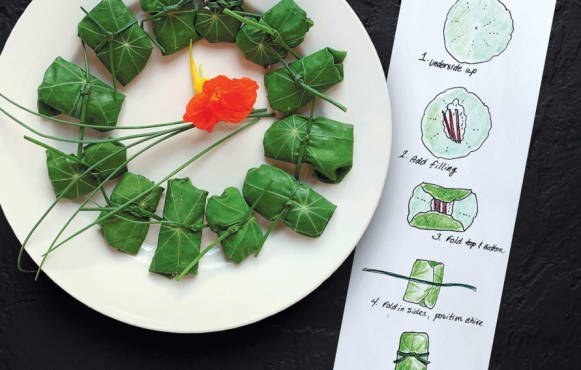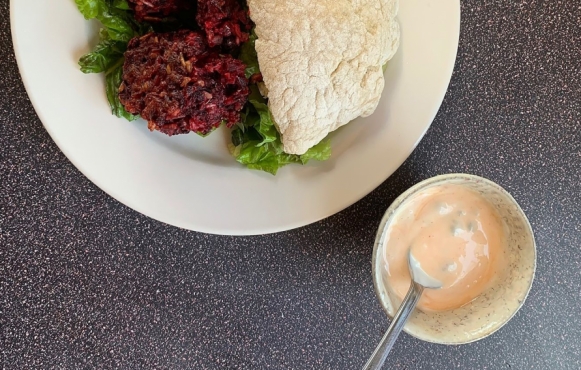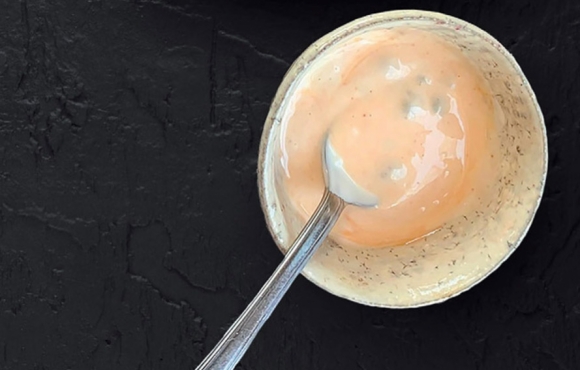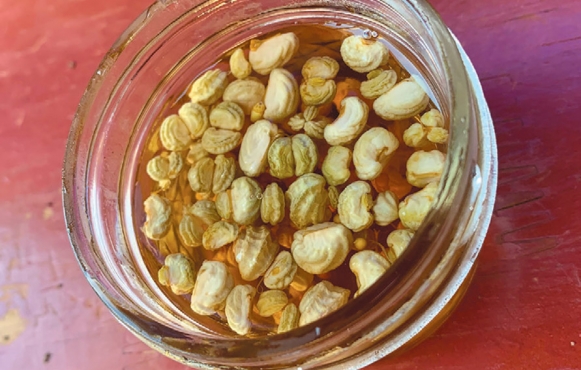Nasturtiums and Beets: A Garden Pair to Delight the Senses
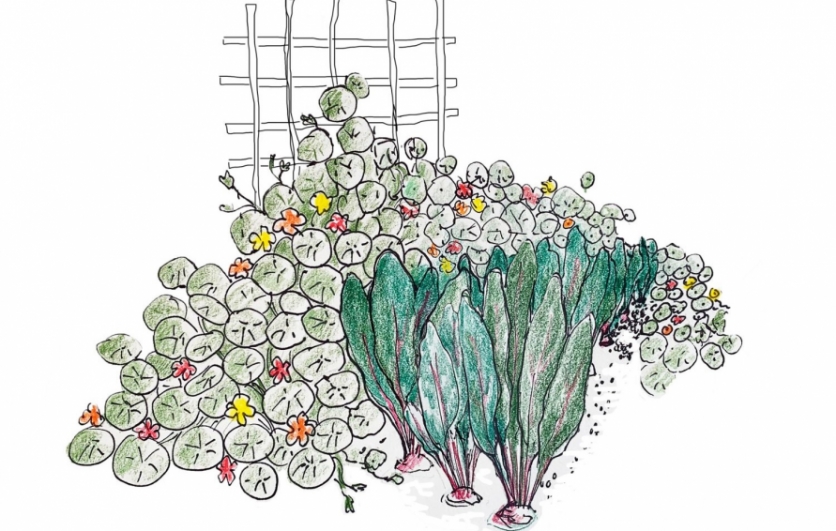
Nasturtiums and beets are garden favorites that pair well together. Nasturtiums add spice to beet dishes and flair to your garden, providing visual drama and alluring scents while tickling taste buds.
Picture This
In my garden, Trailing Mix nasturtiums, with their blossoms in a range of hues from yellow to red, lend a raucous and rangy backdrop to the burgundy and green leaves of Chioggia beets. Some varieties (Tropaeolum majus) have trailing stems that can get up to 10 or 12 feet long. Others (Tropaeolum minus) have a neater, mounded habit. They are available in many palettes, from deep red blossoms to the more exotic colors of Vesuvius with its salmon petals. There are even varieties with variegated leaves. Beets also come in multiple colors and I can imagine a garden bed painted with the bold strokes of golden beet stalks alongside Empress of India nasturtiums with their bluish leaves and brilliant red trumpeting flowers.
A Taste for Everything
Nasturtiums have a bright spicy taste that has been likened to cress. Paired with beets, they add lightness and a bit of pepper to the earthy tones of the sweet roots. What I love about both plants is that you can eat almost every part of them. Tip-to-toe, beet roots and leaves are shredded, sliced, roasted, boiled or baked into countless dishes. Nasturtiums, while not so common, are equally versatile. All of the above-ground parts of the plant can be eaten. The leaves blend happily into salads or stir-fry and the buds and flowers go way beyond garnish in sauces, dressings and soups—or they can even be stuffed with cheese. The seed pods are delightful when preserved as a pickle that resembles a caper in taste. Both beet and nasturtium leaves make a great base for pesto. Each plant also boasts an impressive nutritional profile. Beets provide folate, manganese, potassium and magnesium as well as other important minerals and vitamins. The leaves and flowers of nasturtiums are rich in C and B vitamins and they are also a good source for minerals including magnesium, potassium, calcium, zinc and iron.
Nose Twister
Nasturtium, the common name for the Tropaeolum genus, is derived from a Latin expression meaning nose-twister or nose-tweaker, due to the zippy smell and flavor the plant imparts. The cabbage butterfly and black bean aphids are huge fans of this plant, so much so that it is used as a sacrificial trap to lure the bugs away from cabbages and beans. The trick is to plant nasturtiums near enough to attract the bugs but not so close that those bugs enjoy a smorgasbord of everything. As they congregate on the nasturtium leaves you can sometimes maintain balance by plucking a leaf now and then without losing the whole plant.
Other insects such as cucumber beetles, whiteflies and squash bugs are repelled by the nasturtium smell, so it is useful to plant them near cucumbers, tomatoes and eggplant. The bold little buckets of color also attract important pollinators like bees, hummingbirds and butterflies as well as other beneficial insects. Hoverflies (one of the helpful bugs) like to hang out in the nasturtiums but that is perhaps because hoverflies like aphids!
While beets have a much subtler scent, they seem to bring some people joy and others dismay. Opinions don’t seem to be as polarized as they are with cilantro, but there are definite camps. However, it seems that dismal childhood memories of eating canned beets are swept away for some folks when they are presented with dishes made with fresh-from-the-farm beets. These excellent plate-mates are worth a look—and smell, and taste—in any garden or dish. Try the following recipes and add an element of sensory surprise at your next summer gathering.


